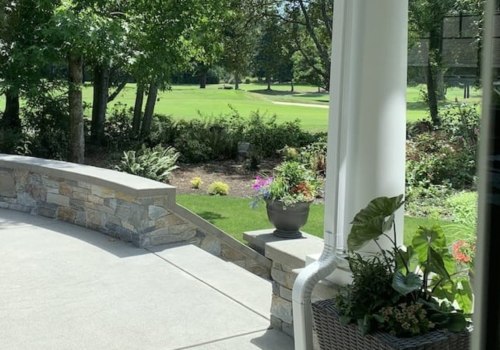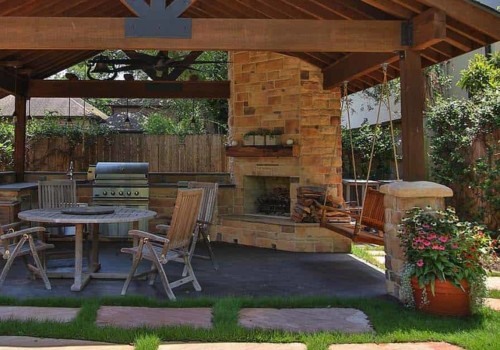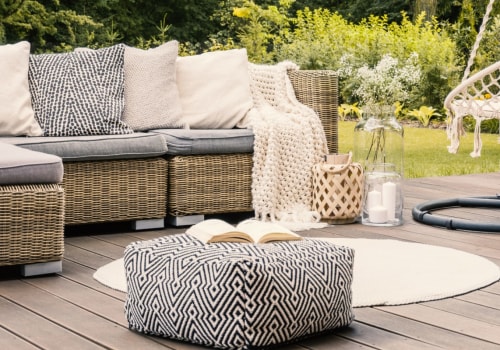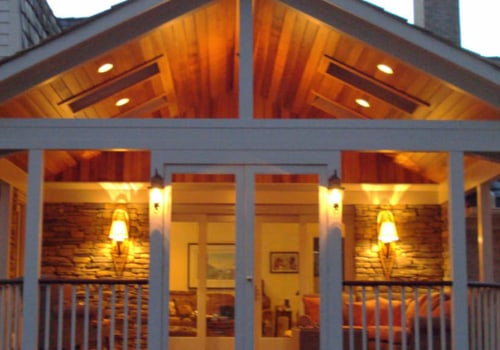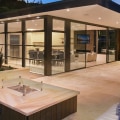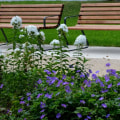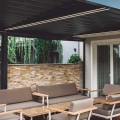Place the cups, place the cups, hang the cups on the screws. Design your wall, this wall will be a living work of art. Add soil, put on some fashionable gardening gloves and fill the cups with potting soil. Living walls should last about 4 years, and to keep your walls looking good, make sure to replant when the plants outgrow their space.
The Ninja Foodi 5-in-1 Indoor Grill is a multifunctional indoor grill that is also an excellent air fryer, but is expensive and bulky. Add some climbing plants to your outdoor wall decorating ideas and you'll even create a 3D effect without fully committing to a real living wall. Once you've chosen a structurally sound wall or fence, simply screw in rows of treated slats 2 inches by 1 inch apart by 38 cm to fill the space. Check with a spirit level as you go, to make sure they're OK.
Fill the pots with the plants of your choice with 12-13 cm pots. Remove the plants from their pots and plant them directly into the pots. Alternatively, to make changing the scheme really easy, place the pot directly in each pot, making sure that the pot touches the base of the container. The best living wall plants should be relatively compact, less than 50 cm, or be able to withstand regular pruning.
Group them in vertical or angled drifts, not horizontally, as this will prevent the upper floors from shading those below. If you intertwine these drifts, you can create a nice tapestry effect. Alternatively, try grouping plants into bold squares or rectangles for a modern look. Introduce the plants in a small size (ideally as plug plants), as this will make it easier for them to settle.
The plants you choose will depend on whether or not you want to have an interior or exterior wall. For both interior and exterior walls, succulents and vegetables are very popular. Pass through the existing slits that cut into the fabric and remove a small amount of soil. Choose a slightly larger plant and loosen the roots.
Shake them gently to remove most of the dirt. Takes the roots of the plant through the cleft. With total length in mind, do some calculations to figure out how many 4x4s you'll need. Again, try to plan a 4×4 every 4 feet.
Or less, adding one more for one end. You will need 21 x 4 for each side you see. If you are building a shorter wall, calculate in three tables per foot height. Your wall will look better if you buy lengths that cover the entire wall without seams.
We liked the look of raw sawn cedar with an oil-based stain. But you could save a good amount of money by using treated 1x4s instead of cedar. See the bill of materials on page. Drive stakes one foot or beyond end post locations.
Push both 2×4 ribbons against the stakes and mark the ends so you know where to reset them later. Place the positions of the posts on both belts. Push stakes in the center of each post position, 2 in. Screw the upper tape to the end posts, then attach the middle posts, attaching each to the tapes.
Pour the dry concrete mix into each hole, leaving the top 3 to 4 inches. When you only have two rows of 1 x 4 left to install, measure up to 8 inches. From the top of the one you just placed. Cut the posts and then install the last two rows.
Coated on one side, overlapping the inner corner posts. Then screw a 2×4 onto the 1x4s to act as a backup for the remaining 1x4s. Cut short lengths of 1x4s to finish off exposed post ends. Butt joints are the best for these.
The mitres are difficult to cut and will open into ugly gaps later. Keep the screws close to the center to prevent them from breaking. In addition to cleaning air pollutants, indoor and outdoor green walls can also block excessive noise, reducing noise pollution in a space (as does a privacy cover). You can create a living wall using a variety of different systems, including wall pots where watering drinkers are attached to walls; a modular system of living panels where plants placed in small vessels are rooted in a carpet behind or a panel of pockets for planting, which is hung on a wall and simply placed fill with water once a month.
Wall pots are becoming increasingly popular in cities, where hardworking gardeners must make use of every inch of outdoor space. For an outer wall, it is better to use native plants that can survive local weather conditions and temperature changes. Creating the base for the wall of your house or hanging pot, whether indoors or outdoors, is very similar. With the rise of Patrick Blanc, vivid green walls began to appear all over the place, in residential and commercial spaces, indoors and outdoors.
The second part of the series, this online Masterclass and Q&A live will teach you how and why to prune your plants in summer. In urban environments, exterior walls also improve overall air quality and reduce heat island effects. Anyone who doesn't have room on the ground for all the plants they want can use their vertical space and a few nice plants to bring the green inside or liven up the outside. The systems can range from something as simple as pots hung on the vertical frame, to highly sophisticated modular hydroponic panels from which water and nutrients are supplied and monitored electronically.
. .
